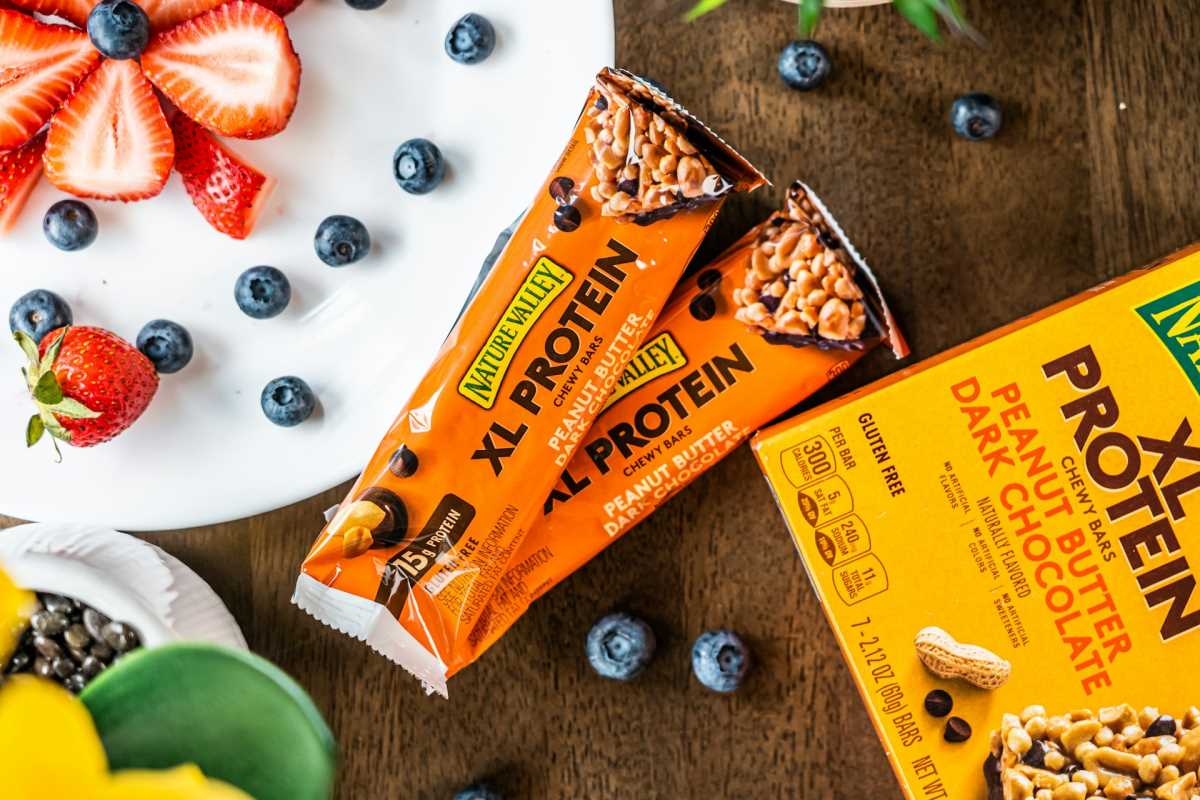With protein bars lining grocery store shelves from floor to ceiling, choosing truly nutritious options can feel overwhelming. Many products masquerade as health foods while packing more sugar than candy bars and artificial ingredients your body doesn't recognize. The good news? Genuinely healthy protein bars do exist—you just need to know what to look for.
Understanding how to identify quality protein bars empowers you to fuel your body with clean nutrition rather than processed substitutes. Whether you're an athlete seeking post-workout recovery, a busy professional needing convenient nutrition, or someone working to increase daily protein intake, the right protein bar can support your wellness goals without compromising your health standards.
Let's explore the science behind healthy protein bars and equip you with the knowledge to make informed choices that truly nourish your body.
What Makes a Protein Bar Genuinely Healthy?
A truly healthy protein bar goes beyond simply containing protein. It provides balanced nutrition through high-quality ingredients while avoiding the excessive sugars, artificial additives, and chemical preservatives that plague many commercial options.
Clean Protein Sources
The foundation of any quality protein bar lies in its protein source. Look for bars featuring complete proteins that provide all nine essential amino acids your body cannot produce on its own.
Whey protein remains one of the most bioavailable options, meaning your body can efficiently absorb and utilize its amino acids. Research published in the Journal of the American College of Nutrition shows whey protein supports muscle protein synthesis better than most plant-based alternatives.
Plant-based proteins like pea, hemp, or brown rice protein offer excellent options for those avoiding dairy. While individual plant proteins may not contain all essential amino acids in optimal ratios, quality manufacturers combine different plant sources to create complete amino acid profiles.
Whole food proteins such as nuts, seeds, and legumes provide protein along with beneficial fats, fiber, and micronutrients. These naturally occurring proteins often digest more easily than isolated protein powders.
Balanced Macronutrient Profile
Healthy protein bars maintain balanced ratios of protein, carbohydrates, and healthy fats. This balance supports sustained energy release and prevents the blood sugar spikes associated with high-sugar snacks.
Aim for bars containing:
- 15-25 grams of protein
- 20-35 grams of carbohydrates (primarily from whole food sources)
- 5-15 grams of healthy fats
- At least 3 grams of fiber
This combination provides satisfaction while supporting stable energy levels throughout your day.
Natural Sweetening Systems
Quality protein bars achieve sweetness through natural sources rather than artificial sweeteners or excessive added sugars. Dates, honey, maple syrup, and fruit concentrates provide sweetness along with beneficial compounds like antioxidants and minerals.
While these natural sweeteners still contribute sugar content, they typically digest more slowly than refined sugars and offer nutritional benefits beyond empty calories.
Red Flags to Avoid in Protein Bars
Understanding what to avoid helps you quickly eliminate options that compromise your health goals, regardless of their marketing claims.
Excessive Added Sugars
Many protein bars contain 15-25 grams of added sugars, rivaling candy bars in sweetness. The American Heart Association recommends limiting added sugars to 25 grams daily for women and 36 grams for men—meaning one bar could exceed your entire daily limit.
Watch for multiple sugar sources listed among the first five ingredients. Manufacturers often use various sugar types (cane sugar, brown rice syrup, agave nectar, corn syrup) to avoid having sugar appear as the primary ingredient.
Artificial Ingredients and Preservatives
Avoid bars containing lengthy lists of artificial colors, flavors, and chemical preservatives. These additives serve manufacturing purposes but offer no nutritional benefits and may cause digestive distress in sensitive individuals.
Common problematic ingredients include:
- Artificial sweeteners like sucralose or aspartame
- Chemical preservatives like BHT or BHA
- Artificial colors and flavoring agents
- High amounts of sugar alcohols that can cause digestive upset
Protein Spiking
Some manufacturers engage in "protein spiking"—adding cheap amino acids or nitrogen-containing compounds to inflate protein content numbers without providing complete, high-quality protein. These products may list impressive protein amounts but fail to deliver the muscle-building benefits you expect.
Look for bars that clearly specify their protein sources, and avoid products with excessive amounts of individual amino acids like glycine or taurine listed separately from whole protein sources.
Misleading Health Claims
Be skeptical of bars marketed with terms like "all natural," "superfood," or "clean" without third-party verification. These terms lack regulatory definitions and often mask products with questionable ingredient profiles.
Focus on actual ingredient lists and nutritional facts rather than marketing language to assess true quality.
How to Read Protein Bar Labels Like a Pro
Developing label-reading skills empowers you to quickly identify quality options while avoiding products that don't meet your standards.
Start with the Ingredient List
Ingredients appear in descending order by weight. The first three to five ingredients make up the majority of the product, so these should align with your quality standards.
Look for recognizable whole food ingredients like:
- Nuts and nut butters
- Seeds (chia, flax, pumpkin)
- Dates or other whole fruits
- Whole grains like oats
- Quality protein sources
Avoid bars where the first ingredients are sugars, syrups, or artificial compounds.
Analyze the Nutrition Facts Panel
Beyond protein content, examine the complete nutritional profile:
Protein per serving: Aim for at least 15 grams, though 20+ grams is ideal for post-workout recovery.
Total carbohydrates vs. sugar: Calculate how much of the carbohydrate content comes from sugars. Ideally, added sugars should comprise less than 50% of total carbohydrates.
Fiber content: Higher fiber content (3+ grams) indicates more whole food ingredients and supports digestive health.
Sodium levels: While some sodium is acceptable, avoid bars with more than 200mg per serving unless you have specific electrolyte needs.
Consider Serving Size
Some bars list impressive nutritional stats but achieve them through smaller serving sizes. A bar containing only 10 grams of protein might require eating two servings to meet your needs, doubling the sugar and calorie content.
Compare products on a per-serving basis that matches your intended consumption to make accurate assessments.
Top Characteristics of Genuinely Healthy Protein Bars
The healthiest protein bars share several key characteristics that distinguish them from heavily processed alternatives.
Short, Recognizable Ingredient Lists
Quality bars typically contain 10 or fewer ingredients, most of which you could find in your kitchen. This simplicity indicates minimal processing and reduces the likelihood of problematic additives.
Adequate Fiber Content
Healthy protein bars contain at least 3-5 grams of fiber per serving, indicating the presence of whole food ingredients. Fiber supports digestive health, helps regulate blood sugar, and contributes to satiety.
Balanced Sweetness
While protein bars should taste good, excessive sweetness often indicates added sugars or artificial sweeteners. Quality bars achieve pleasant flavor through natural ingredients without overwhelming sweetness.
Minimal Processing
The best protein bars maintain the natural structure of their ingredients rather than breaking everything down into powders and reconstituting them. You should be able to see pieces of nuts, seeds, or dried fruit rather than completely homogeneous textures.
Appropriate Protein-to-Calorie Ratios
Healthy protein bars provide efficient protein delivery without excessive calories. Aim for bars offering at least 0.5 grams of protein per 10 calories. A 200-calorie bar should contain at least 10 grams of protein to be considered protein-focused.
Examples of Top-Rated Healthy Protein Bars
While individual preferences vary, several brands consistently meet high nutritional standards while delivering satisfying taste and texture.
Whole Food-Based Options
RXBAR features simple ingredient lists with egg whites, dates, nuts, and minimal additional components. Their transparency in listing exactly what's inside appeals to health-conscious consumers seeking clean nutrition.
Larabar Protein combines the company's whole food philosophy with added plant proteins. These bars maintain recognizable ingredients while boosting protein content for fitness-focused individuals.
Health Warrior Pumpkin Seed Bars utilize pumpkin seeds as the primary protein source, providing complete amino acid profiles along with healthy fats and minerals.
Premium Nutritional Profiles
Bulletproof Collagen Protein Bars feature grass-fed collagen protein and MCT oils for sustained energy. Their focus on quality fats and proteins appeals to those following ketogenic or paleo approaches.
Primal Kitchen Bars emphasize organic ingredients and avoid inflammatory oils while providing substantial protein from nuts and collagen.
Budget-Friendly Quality Options
KIND Protein Bars maintain the brand's commitment to recognizable ingredients while adding protein to their nut-based formulations. They offer quality nutrition at accessible price points.
GoMacro MacroBars provide organic, plant-based protein options with clean ingredient profiles suitable for various dietary preferences.
Pro Tip: Make your own protein bars at home!
Strategic Timing for Protein Bar Consumption
Understanding when to consume protein bars maximizes their nutritional benefits and helps you reach your health and fitness goals effectively.
Post-Workout Recovery
The 30-60 minutes following exercise is considered an ideal window for protein consumption. During this period, your muscles are especially receptive to nutrients that support repair and growth. A protein bar with at least 15–20 grams of high-quality protein and some carbohydrates can help jumpstart muscle recovery, replenish glycogen stores, and reduce soreness after tough workouts. Look for options with a carbohydrate-to-protein ratio of about 3:1 or 4:1 for optimal post-workout benefits.
Pre-Workout Fueling
If you need a convenient energy boost before a training session, a protein bar can be a smart choice—especially if you haven’t eaten a meal in several hours. Aim to eat your bar 30-60 minutes before exercise. Favor bars higher in easily digestible carbohydrates with moderate protein (10-15 grams), and low in fat and fiber to avoid digestive discomfort during your workout. This combination will help provide sustained energy while supporting muscle function.
Smart Snacking Anytime
Protein bars can also serve as balanced snacks between meals to curb hunger, stabilize blood sugar, and support overall protein goals. They're especially useful during busy days, travel, or when you're on the go. For everyday snacking, choose bars with moderate calories (150–250 per bar), at least 3 grams of fiber, and minimal added sugars. Pairing a bar with fruit or a handful of nuts can help make your snack even more filling and nutritious.
 (Image via
(Image via





